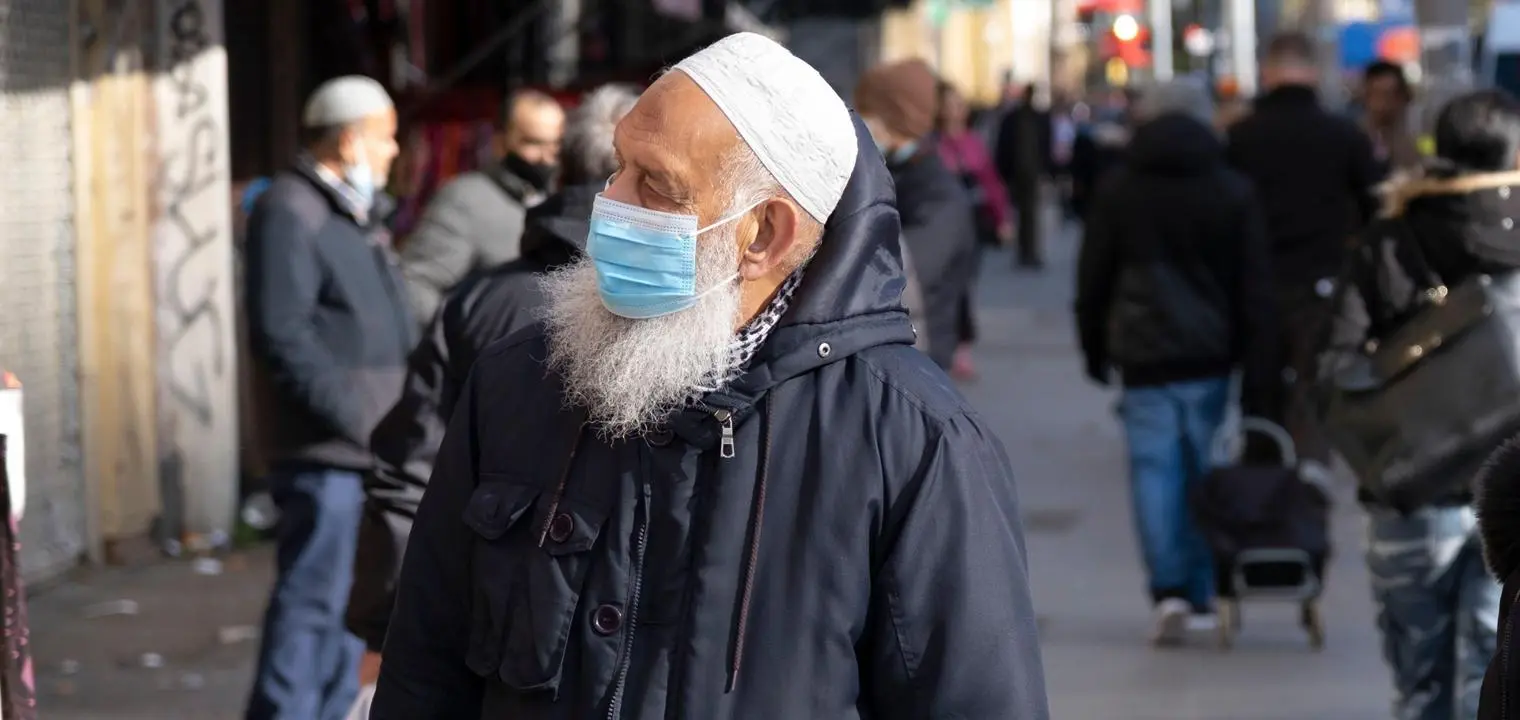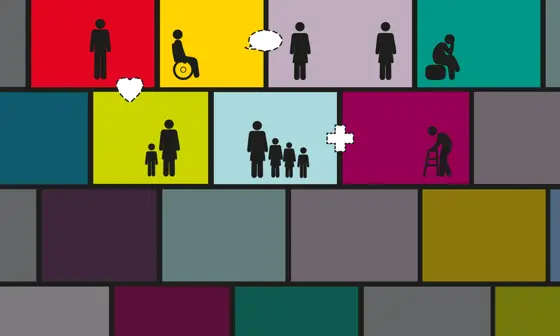Why ethnic minorities are bearing the brunt of COVID-19

Contents
Early in the pandemic there were indications that COVID-19 might be impacting individuals from minority ethnic backgrounds more severely in the UK. Newspaper articles highlighted the ways in which healthcare workers who died from COVID-19 seemed to be predominantly ethnic minorities, and presented indicative evidence that death rates were higher in areas where there were more ethnic minorities living.
In April 2020, a study of hospital admissions presented the first substantive evidence that death rates were higher among black and Asian patients who had contracted the disease. It was not yet clear, however, if there were ethnic inequalities in risks of mortality from COVID-19 in the population at large.
In addition, investigations into the economic impacts of lockdown began to show how different sections of society were affected to a greater or lesser extent. Young people, for example, were at particular risk of working in shut-down sectors and questions were raised about widening inequalities. At this time, however, there had also been no analysis of how far ethnic economic inequalities might be enhanced by the closing down of large portions of the economy.
Almost all minority ethnic groups had higher risks of dying from COVID-19 than the white British majority of a comparable age.
To address this gap, with Ross Warwick from the Institute for Fiscal Studies, I set out to establish whether risks did indeed differ across ethnic groups. We were both already involved in the wide-ranging IFS Deaton Review of Inequality, which was concerned with documenting and analysing inequalities across social groups as well as patterns of economic inequality in the population as a whole. It was important to consider in parallel ethnic differences in both the health and economic impacts of COVID-19.
Our study, published in early May 2020, was the first to show that almost all minority ethnic groups had higher risks of dying from COVID-19 than the white British majority of a comparable age. Given that the risk of COVID-19 increased very directly with age, we demonstrated how important it was to take account of the generally younger profile of minority ethnic groups, which would be expected to lead to fewer deaths, other things being equal.
This striking finding of higher mortality risk across ethnic groups was subsequently borne out by other studies and it continued to be observed in the "second wave" during the winter of 2020/21. Although most analysis to date has been carried out on individuals in private households, deaths in care homes have also been shown to be higher for black and Asian minority groups. While these findings were consistent with earlier research, we were nevertheless taken by surprise at the size of the differences and the difficulty in fully accounting for them.
COVID-19’s unequal impact on different ethnic minority groups
Our study also explored some of the potential reasons for the higher risk to ethnic minorities: greater likelihood of working in health and social care key worker occupations, which was particularly the case for some groups, such as black Africans; greater chances of having a health condition that made them especially vulnerable to COVID, which was particularly the case for some groups such as Bangladeshis; and greater chances of living with others or in more densely occupied or overcrowded areas, which was the case for most minority groups compared to the white British majority.
These risk factors have been shown to be directly relevant for risks of both COVID-19 infection and mortality in subsequent studies, but they do not fully account for the different health impacts of COVID-19 on the white majority and black and South Asian minority groups.
While overall younger, female workers tended to be more affected… for these ethnic minority groups, it was more likely to be mid-life men, [so] the loss of income affected family groups more.
It’s not just health impacts but economic impacts that are unequally felt
Given that there was clear evidence from the Office for National Statistics on differences in COVID-19 death rates across occupations, I decided to look more closely at how occupational exposure related to being impacted by the pandemic. My findings revealed how the combination of both occupation and family circumstances could contribute to putting some workers more at risk of transmission and severity of COVID-19.
Differences in patterns of work and occupations were also implicated in the economic impacts of COVID-19. Ross Warwick and I found that there were substantial differences in the chances of working in those sectors that were most affected by COVID-19 and lockdowns. Pakistanis and Bangladeshis were shown to be particularly affected. They were also more likely to be self-employed, a group of workers who were generally also hard hit.
While overall younger, female workers tended to be more affected, our study showed that for these ethnic minority groups it was more likely to be mid-life men. Correspondingly, the loss of income affected family groups more, since these men were likely to have partners and children.
There will be long-term implications for the most disadvantaged if policymakers don’t consider COVID-19’s varying impacts
The economic consequences of COVID-19 have been, and continue to be, more far-reaching where workers affected have families and children. Conversely, if other household members are bringing in earnings, these can buffer against the financial impacts. There are large differences in the extent to which these scenarios apply. For example, based on patterns of work and family life preceding the pandemic we showed that 29 per cent of working age Bangladeshi men both worked in a shutdown sector and had a partner who was not in paid work. This is the case for only 1 per cent of working age white British men.
While each loss to COVID-19 is a tragedy for the individual and their family, the differential impacts of the virus across ethnic groups have impacted communities and families in different ways. Looking ahead there is reason to be concerned about the long-term implications for children growing up in families where workers or incomes have been lost; and that the substantial reductions in child poverty gaps across ethnic groups of recent decades will be undone without concerted attention.
Since publishing her original report, Professor Platt has carried out extensive policy engagement including participating in meetings with the Mayor of London on COVID-19 and ethnic inequalities, giving oral evidence to the Women and Equalities Select Committee inquiry on COVID-19 inequalities, and providing advice to the Scottish Government Directorate for Fair Work, Employability and Skills. Between September 2020 and May 2021, she was an active member of the SAGE Ethnicity Sub-group, and in September 2020 was appointed a Special Adviser to the Women and Equalities Committee Inquiry into "Unequal Impact? Coronavirus and BAME people", leading up to its publication in December 2020.
Image: Alamy
Download a PDF version of this article




